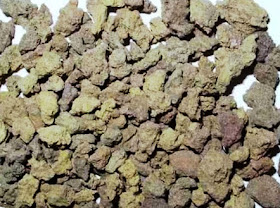Pozzolanic ash ,also known as Pozzolana is a constructive residue collected from the Biosphere system which is often used as a road base and as a material for producing concrete block for commercial uses.Hence it is also referred to as a fine volcanic ash, originally found in Italy, and there are a few sites who had done some research that showcased some varieties of pozzolana and these all can be obtained from the volcanic regions of Italy.
Types of pozzolanic
a. black
b.white
c.grey
d.red
Recent pozzolanic cements are a combination of natural pozzolans and Portland cement.The advanced alkalinity of pozzolana causes it to become more proofed against common corrosion from sulfates. Once completely solidified, the Pozzolana cement blend may perhaps be stronger than Portland cement, because of its low porosity, that also can make it more protected from water absorption and spalling.
Commercial resources of materials with Pozzolanic properties:
- Class F -fly ash from coal-fired power plants
- Silica fume from silicon production
- Rice husk ash from rice paddy-fields
- Metakaolin from oil sand operation
- Class C (calcareous) fly ash
- Ground granulated blast furnace slag
Pozzolanic effect
Within the foundation of the Pozzolanic's kind of reaction appears to be an effective acid-base effect between calcium hydroxide also called Portlandite and silicic acid.
General formula (CaH2SiO4 • 2 H2O)
What's good about Pozzolanic ash:
- Is actually used as supplemental cementitious materials
- Many commercial and gardening by-products are pozzolanic
- Widely-used to lessen the measure of cement used within concrete
Issues Concerned
Sustainable Development aims to succeed in:
- Producing materials and products with sustainability as a primary goal
- Expanding developed products to replace less sustainable or non-renewable unprocessed trash
- Recycling suitable waste materials
 |
Pozzolana, scoria and lava (pyroclastic material) on the external crater slope.
Avachinsky volcano (altitude - 2650 meters above sea level) |
- Reducing green-house gases from business oriented firms and industrialized emissions
- Reducing CO2emission, which is certainly one of the primary contributors to global warming
Pozzolanic substances have long demonstrated their toughness in producing good performance concrete .This work examines the possibilities of pozzolanic ash as being a total substitution for ordinary cement. This exploration considered the appropriateness for the construction of less expensive houses and buildings.


No comments:
Post a Comment